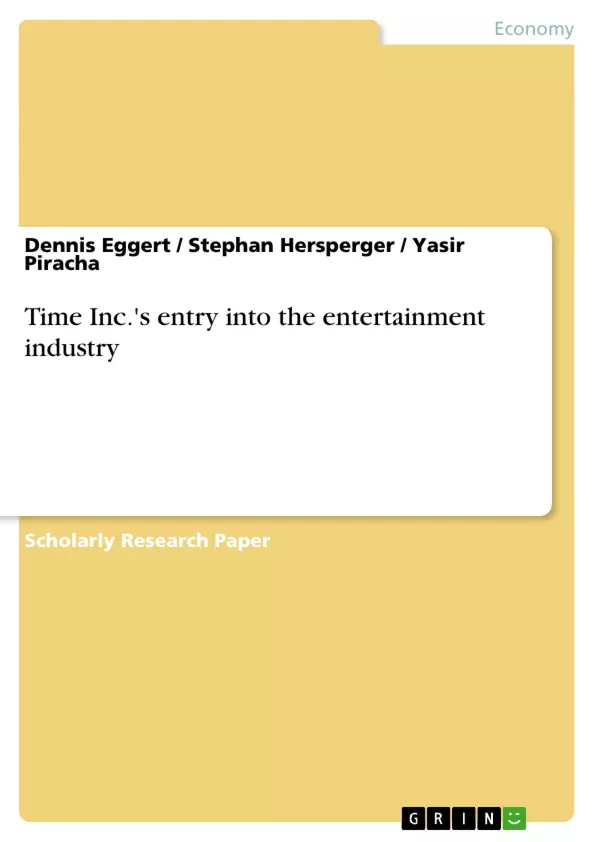Conclusion [about question 1]:
The exchange rate is very attractive for Warner’s shareholders, because they will get $515 million more than their original value of investment. For the same reason the exchange ratio is unattractive for Time’s old shareholders, because they have to suffer the loss of this $515 million. Moreover, the overall NPV of the merger is negative. As following table shows, after
the merger Warner’s shareholders will be relatively better off than Time’s shareholders. This might be a reason why Warner’s managers have been ready to merge with Time and gave up their managerial jobs.
Inhaltsverzeichnis (Table of Contents)
- Question 1: How attractive is the merger of Time with Warner?
- (a) What are the value enhancement opportunities?
- Horizontal merger leads to economies of scale
- Vertical merger
- Complementary resources
- (b) Is the proposed exchange ratio of 0.465 per Warner share attractive?
- Question 2: What prompted Paramount's interest in Time?
Zielsetzung und Themenschwerpunkte (Objectives and Key Themes)
This case study analyzes the potential benefits and drawbacks of the merger between Time Inc. and Warner Bros., exploring the economic rationale behind the proposed deal and the strategic motives of Paramount's interest in Time.
- Economic attractiveness of mergers
- Value enhancement opportunities through horizontal and vertical integration
- Complementary resources and strategic partnerships
- Shareholder value and the impact of mergers on stock prices
- Strategic motives for corporate acquisitions and the pursuit of market dominance
Zusammenfassung der Kapitel (Chapter Summaries)
- Question 1: How attractive is the merger of Time with Warner? This section examines the economic rationale behind the merger, highlighting the potential benefits of economies of scale, vertical integration, and complementary resources. It also analyzes the proposed exchange ratio and its implications for shareholder value.
- Question 2: What prompted Paramount's interest in Time? This section explores the strategic motives behind Paramount's interest in Time, focusing on potential benefits such as further vertical integration, a wider range of products, and a strong position for global growth.
Schlüsselwörter (Keywords)
This case study focuses on the topics of mergers and acquisitions, corporate finance, strategic management, shareholder value, economies of scale, vertical integration, complementary resources, media and entertainment industry, and global growth.
- Quote paper
- Dennis Eggert (Author), Stephan Hersperger (Author), Yasir Piracha (Author), 2006, Time Inc.'s entry into the entertainment industry, Munich, GRIN Verlag, https://www.grin.com/document/76545



